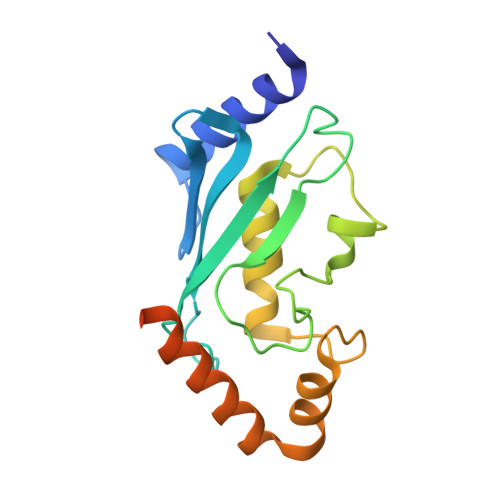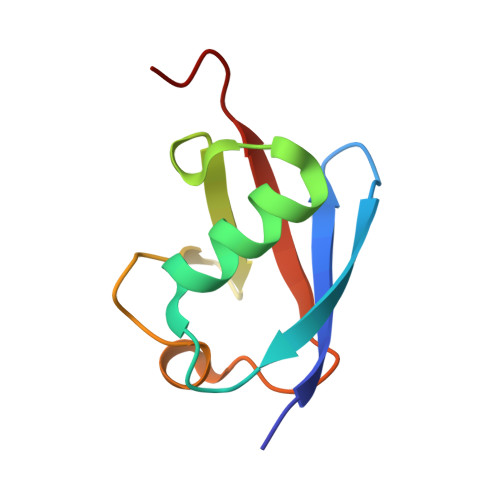Role of a non-canonical surface of Rad6 in ubiquitin conjugating activity.
Kumar, P., Magala, P., Geiger-Schuller, K.R., Majumdar, A., Tolman, J.R., Wolberger, C.(2015) Nucleic Acids Res 43: 9039-9050
- PubMed: 26286193
- DOI: https://doi.org/10.1093/nar/gkv845
- Primary Citation of Related Structures:
4R62 - PubMed Abstract:
Rad6 is a yeast E2 ubiquitin conjugating enzyme that monoubiquitinates histone H2B in conjunction with the E3, Bre1, but can non-specifically modify histones on its own. We determined the crystal structure of a Rad6∼Ub thioester mimic, which revealed a network of interactions in the crystal in which the ubiquitin in one conjugate contacts Rad6 in another. The region of Rad6 contacted is located on the distal face of Rad6 opposite the active site, but differs from the canonical E2 backside that mediates free ubiquitin binding and polyubiquitination activity in other E2 enzymes. We find that free ubiquitin interacts weakly with both non-canonical and canonical backside residues of Rad6 and that mutations of non-canonical residues have deleterious effects on Rad6 activity comparable to those observed to mutations in the canonical E2 backside. The effect of non-canonical backside mutations is similar in the presence and absence of Bre1, indicating that contacts with non-canonical backside residues govern the intrinsic activity of Rad6. Our findings shed light on the determinants of intrinsic Rad6 activity and reveal new ways in which contacts with an E2 backside can regulate ubiquitin conjugating activity.
- Department of Biophysics and Biophysical Chemistry, Johns Hopkins University School of Medicine, 725 North Wolfe Street, Baltimore, MD 21205, USA.
Organizational Affiliation:


















